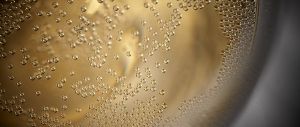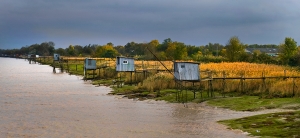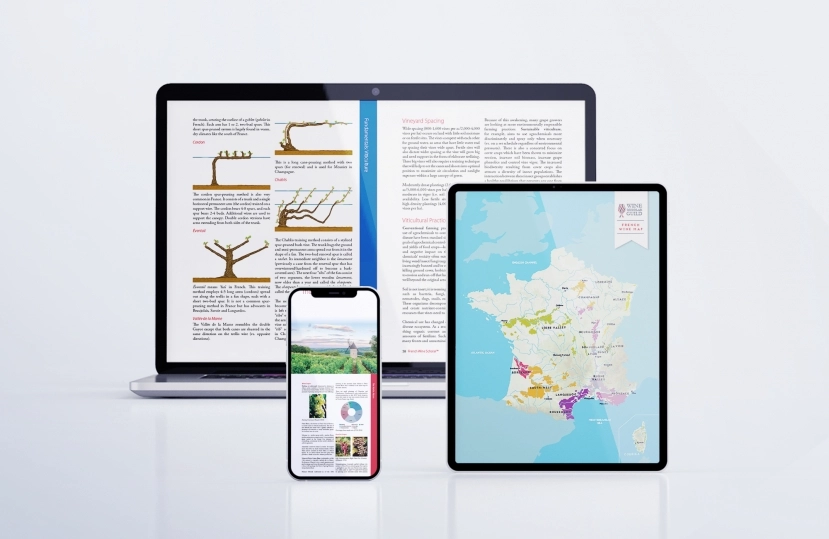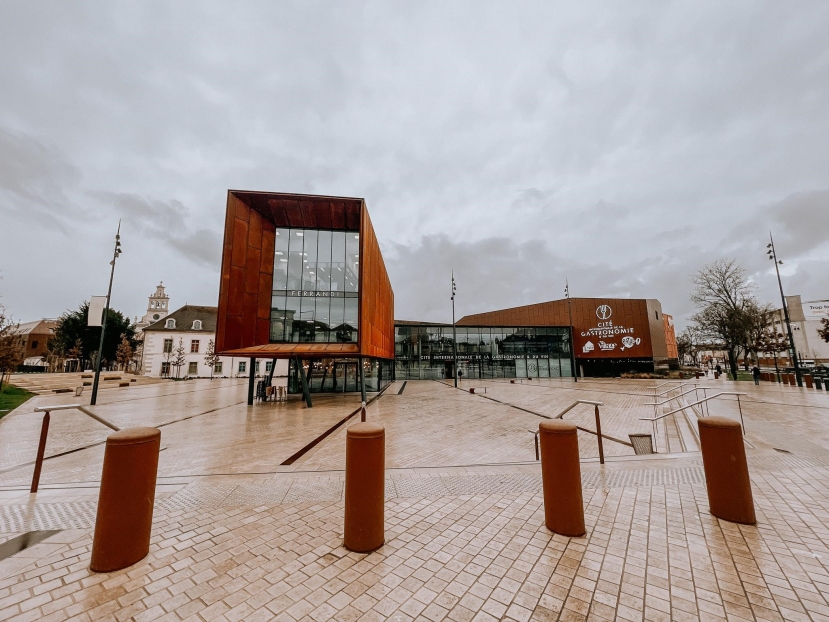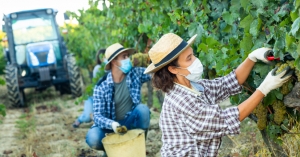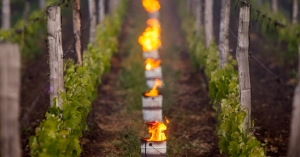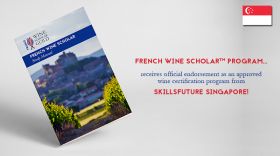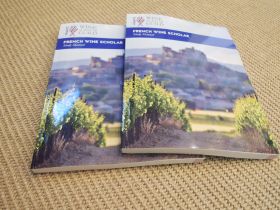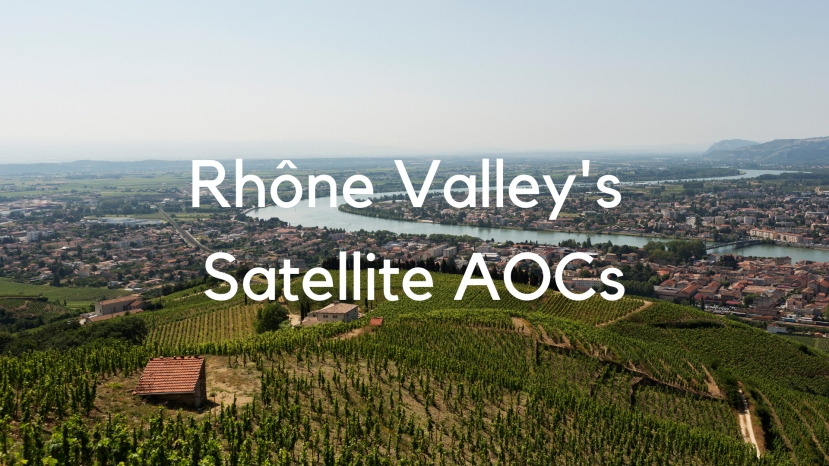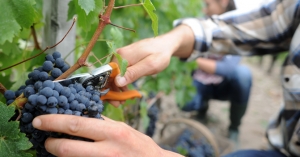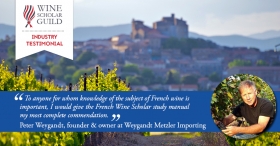BLOG
french wine
A BIT OF WINE CHEMISTRY: Lessons from Champagne
Day one of the Champagne study trip initiated a discussion which continued throughout the week of factors impacting aromas and flavors in champagne. Broadly, aromas can be categorized into the impacts of grape variety, terroir, vinification, and post-production events (influencing individual bottles versus entire “batches”).
This article will focus upon the biochemistry of sulfur, nitrogen, oxygen, and sugars in an acidic environment (esters arising from acidification of alcohol); the intent is not intended to be comprehensive. For purposes of this essay, the use of the word aroma will include the complex notes of aging characterized as “bouquet.”
“Although many efforts have been made to characterize the quality and flavor of the compounds in wine… tasting remains the single universal test used… This is because the taste of a molecule, or blend of molecules, is constructed within the brain of a taster.” F. Brochet and D. Dubourdieu, 2001
There have been moments in my career as a professional winophile where I’ve realized I haven’t retained a bit of information that perhaps I should have learned in grade school had I been paying attention. Everyone needs a refresher once in a while and this series of blog posts aims to fill in possible gaps of knowledge that your grade-school mind may not have realized you would use in your fabulous wine career.
Estuary is a term that surfaces a lot when talking about Bordeaux. Though it is often used interchangeably with the word “river,” estuary has a very specific meaning.
It's official! We have launched the 7th version of the French Wine Scholar® program!
The updated study manual, state-of-the-art e-learning modules, and instructor resources have been carefully enhanced to create the most current program on the wines of France.
This newest version is the product of tremendous work from our Education and E-Learning Teams, enabling us to offer students a brand-new experience of our most popular study program. Every aspect of FWS has been
Uncovering the Secrets of Burgundy's Winemaking Tradition through Immersive Exhibitions, Workshops and Tastings...
Where are we headed? This is a question which all of us have probably asked ourselves at some point during 2020, as a global pandemic unfolds chaotically across a planet experiencing runaway climate change. Both challenges have directly affected French wine growers, with trade tariffs imposed by the USA on European winegrowers forming a third stress-inducing headwind.
Read the Wine Journalist and Critic, Andrew Jefford’s Keynote Speech to the 2020 Vancouver International Wine Festival in this specially prepared written version for the Wine Scholar Guild blog. Andrew is happy to respond to any questions or comments you may have about this post. Use the "Comments" feature at the bottom of this page.
The Wine Scholar Guild’s French Wine Scholar (FWS) Program received official endorsement as an approved wine certification program from Skillsfuture Singapore! The Skillsfuture is a national movement that encourages individuals to take ownership of their skills development and lifelong learning. All Singaporeans aged 25 and above have received an opening credit of S$500 since January 2016. Such credit will not expire and the Singapore government will provide periodic
The 6th Edition of the French Wine Scholar program has just been released!
The FWS manual has been fully updated and reformatted into a perfect binding (no more spiral!) with:
New, custom-designed maps
New charts, graphics and rich imagery
Need-to-know icons
Summary:
Do you know your Luberon from your Ventoux? What about Clairette de Die, the Rhône sparkling wine that's actually made of... Muscat?
In this WSG LIve, we'll look at all 8 of the so-called 'Other Rhône Appellations', a diverse collection that includes some of the largest - and smallest - appellations in France.
We'll look at the key facts about the terroir that makes each of these appellations unique. Additionally, Matt
After a generous 2018 French-wine harvest, nature has dialed back on its beneficence by around 12% in 2019: initial estimates put the crop at around 43.4 million hl compared to 49.4 m hl last year. That’s not disastrous, though, especially since clouds have been gathering over the export scene in the last few months: the USA has imposed 25% tariffs on French wines under 14% abv, while sales to Hong Kong (often the preferred route into China for French fine wines) dropping by 26% over the last six months of political turmoil there. The generally hot weather of 2019, of course, may give French wines a helping hand back into the US if those tariffs linger: it wasn’t hard to produce wine over 14% this year.
We would like to thank Peter Weygandt, one of the most highly respected importer of French wine in the USA, for taking the time to carefully review the French Wine Scholar® study manual and write us such beautiful words of testimonial.
PETER'S FULL TESTIMONIAL ABOUT THE FRENCH WINE SCHOLAR® MANUAL
"To anyone for whom knowledge of the subject of French wine is important, I would
Summary
Sweet Bordeaux wines are undoubtedly some of the finest in the world, but have been chronically unfashionable for a really long time. In this interview we catch up with Wendy Narby who sheds some light on what the future holds for these outstanding wines, and the innovative ways in which producers are evolving their business models to ensure their survival and how they are thriving into the future.
About the
How to Watch
You can find these videos in the WSG Community at the links below.
Part 1 - Past
Part 2 - Present
Watch Here
You can watch this video in our community space here
Summary
When most people think of the great grapes of the Northern Rhone they’ll think Syrah and Viognier. But we really shouldn’t overlook these other two fine varieties - they are
How to Watch
You can watch this interview on our community pages here
Summary
'Red wine with fish. Well, that should have told me something.' - James Bond, 'From Russia with Love', 1963
Leading French somm Philippe Troussard might have a thing or two to
Watch Here
You can watch this video in our community space here
Summary
In this interview we’re joined by Matt Walls, one of the world’s leading experts on the wines of the Rhone, to answer all your questions on this hot topic! We discuss what the peppery smell on Syrah is
Watch Here
You can watch this video in our community space here
Summary
Should you use whole bunches to make great Syrah? What does it add? Actually, what is it at all?!? We’re once again delighted to be joined by Matt Walls to discuss this really important part of the
How to Watch?
You can watch this session on our community space here
Summary
Have you ever fancied a trip to the Jura but don’t know where to start? We caught up recently with Jura afficionados Manon Gallet and Phelan Burgoyne to discuss all the things you need to know to plan a wine trip
Where to Watch
You can watch this Insider's Guide Interview in our community space here
Summary
In our final interview with Philippe Troussard, we discuss the amazing potential and versatility found in the white grapes of the Jura. Of course Philippe mentions the great Vin Jaune, but he also explores the
Let's face it: Bordeaux is struggling. A recurring theme during my latest visit was producers lamenting declining sales, despite their wines tasting rather delicious. In January, the Gironde Chamber of Agriculture reported that more than 1,320 winegrowers were facing financial challenges – a situation that prompted the agriculture ministry to allocate €57 million to support the uprooting of nearly 10,000 hectares of vines in the region.

